|
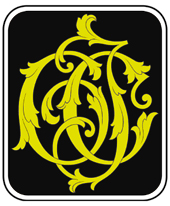
THE JOHN and CAROLYN GROSSMAN COLLECTION
The Winterthur Library at the Winterthur Museum & Country Estate
Route 52, Kennett Pike, Winterthur, Delaware
19735. www.winterthur.org. Image Gallery
|
|
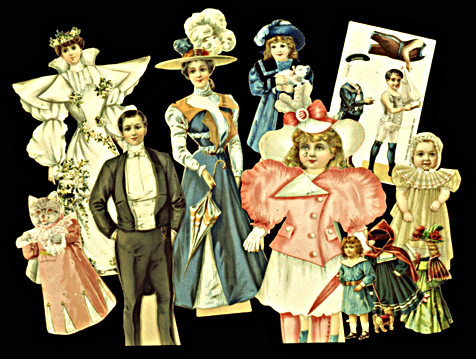
PAPER DOLLS (English & American, 1895-1920)
Few
forms of Victorian ephemera provided more entertainment and educational value than antique paper dolls. Paper dolls were a
parlor craft for proper young ladies, instructional tools for girls and boys, and popular playthings for children of all ages.
Fashion conscious females loved the lavish outfits and accessories packaged with paper dolls. Nurturing parents appreciated
the helpful hints about manners and proper dress printed on paper dolls. And of course kids enjoyed the hours of creative
fun offered by paper dolls with changeable outfits, moveable limbs and kits for making costumes of crepe or tissue paper.
|
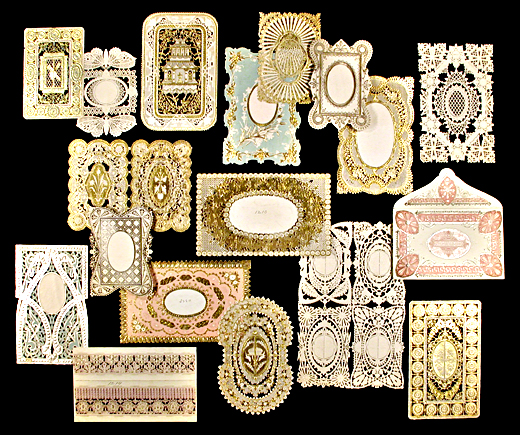
LACE PAPER (English, 1840-1870)
When the delicacy
and versatility of these ornate sheets of paper were developed in the 1830s and perfected by the 1840s, a lacey love affair
soon followed. In France, Germany, England and America, manufacturers created lace paper for decorative stationery, devotional
cards, shelf and box edging, envelopes, and display accents under cakes and candies. But perhaps the most popular use for
paper lace was on greeting cards, especially fancy ones for Valentine's Day. John's collection holds more than three thousand
examples of lace paper including works by major English manufacturers Addenbrooke, Dobbs, Kershaw, Mansell and Meek.
|
|
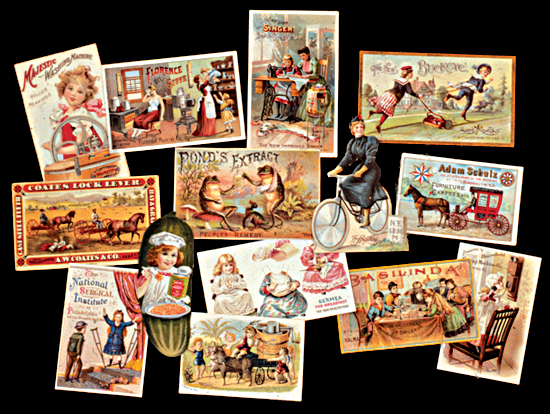
TRADE CARDS (American, c.1885-1910)
Before
the popularity of magazine and newspaper advertisements, savvy Victorian business owners promoted their products and services
with colorful trade cards. These giveaway items combined words with pictures to create product identity, build brand loyalty
and make occasional exaggerated claims. Favorite images included animals, children, families, technology and women. Sound
familiar? Today's advertisements use these same popular themes.
|
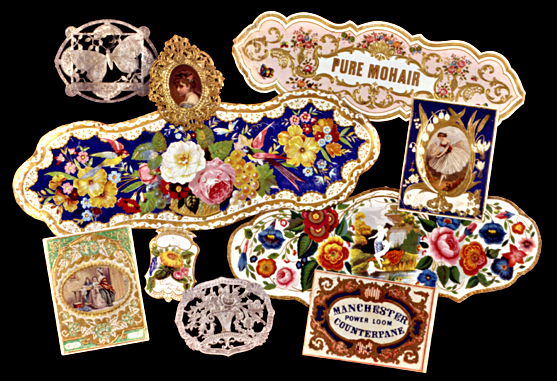
FABRIC LABELS (English & American, 1860-1885).
These colorful and richly detailed paper artifacts were a common sight during the Victorian Era. They represent a time when
clothes were made-to-measure, when seamstresses and tailors operated in most towns, when home dressmakers outfitted their
families, and when ready-to-wear clothing offered an inexpensive option. Fabric labels elegantly decorated an important consumer
item with sizes and shapes to fit the largest bolts or the smallest purchases. But their main function was to identify products,
indicate stock numbers or show quantities of yards sold.
|
|
©2016 All Rights Reserved.
|
